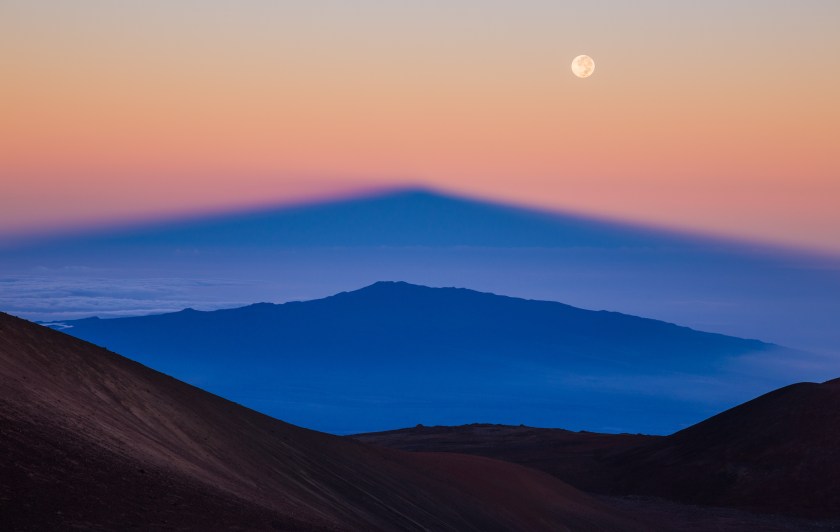
The shadow of Manua Kea, the highest peak in the state of Hawaii, is projected by the rising sun over the volcano, Hualalai, while the Full Moon soars above them. (Sean Goebel)
Sean Goebel
Now in its eighth year, Insight Astronomy Photographer of the Year received more outstanding pictures than ever before in 2016. The competition, run by the Royal Observatory Greenwich in association with Insight Investment and BBC Sky at Night Magazine, received a record number of over 4,500 entries from enthusiastic amateurs and professional photographers from over 80 countries spanning the globe.
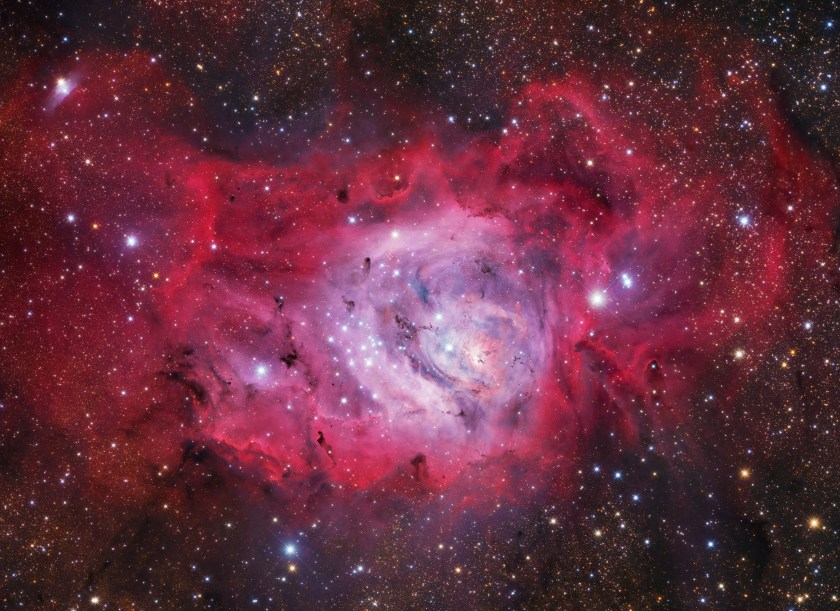
New stars are formed in the undulating clouds of M8, also commonly referred to as the Lagoon Nebula, situated some 5,000 light years from our planet. (Ivan Eder)
Shortlisted images from this year’s entrants include the breathtaking sight of the Perseid Meteor Shower shooting across the sky appearing to cascade from Mount Shasta in California, USA; the Universe providing the sensational natural light show of the Aurora Australis to welcome in the New Year over Nugget Point on the Otago Coast of New Zealand; and the dramatic moment that our star, the Sun, appeared to be cloaked in darkness by the Moon during the Total Solar Eclipse of March 9, 2016 in Indonesia.
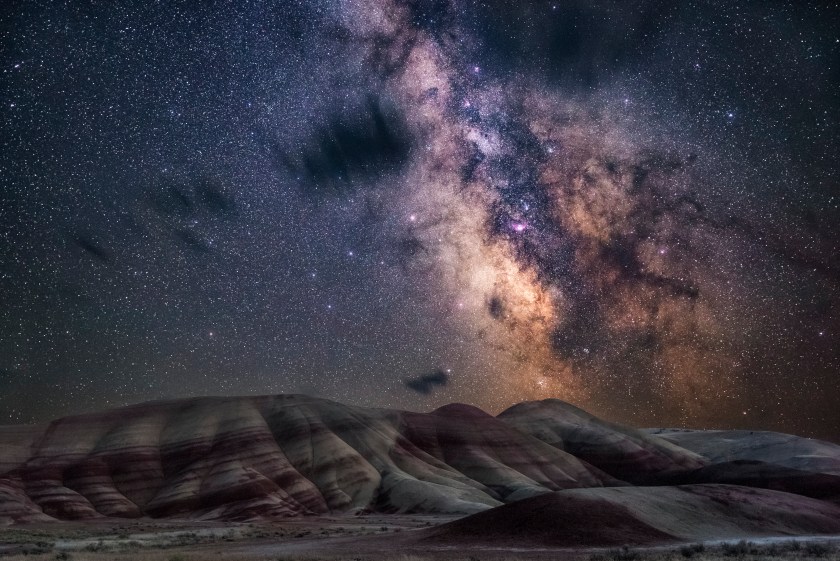
With very little light pollution, the glimmering stars of the Milky Way bathe the colourful layers of the Painted Hills of Oregon in a natural glow.
(Nicholas Roemmelt)
The range of locations is not just limited to our planet. Photographers have also captured sights from across our Solar System, galaxy and the wider universe; from the tempestuous storms visible across the face of our Solar System’s largest planet, Jupiter, looming in the night sky; to the luminous tangle of filaments of Pickering’s Triangle, one of the main visual elements of a supernova remnant in the Veil Nebula, whose source exploded around 8,000 years ago; to the starburst galaxy of M82 (also known as the Cigar Galaxy) lying some 12 million light years away from our planet where a plethora of stars are being created.
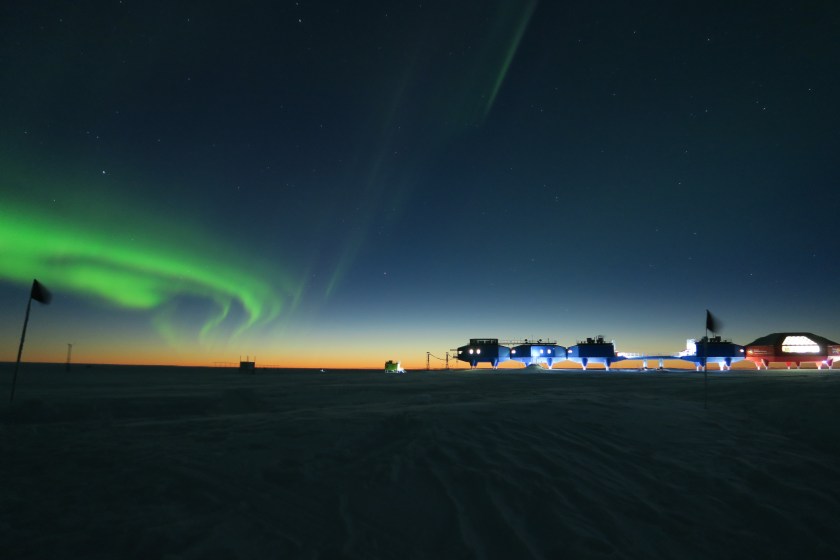
A view of the Halley 6 Research Station situated on the Brunt Ice Shelf, Antarctica, which is believed to be the closest thing you can get to living in space without leaving Earth, making it perfect to be used for research by the European Space Agency. As the Sun’s light dissipates into the horizon, the aurora can be seen swirling overhead. (Richard Inman)
The winners of the competition’s nine categories and two special prizes will be announced on Thursday 15 September at a special award ceremony at the Royal Observatory Greenwich. The winning images will be displayed in a free of charge exhibition at the Observatory’s Astronomy Center from Saturday 17 September. Winners and shortlisted entries will also be published in the competition’s official book, available in November. More information about the contest can be found here.

Comet Lovejoy soars through the night sky in a green haze with an ion tail in its wake. The image shows Lovejoy appearing to lose its tail on 21 January 2015. (Michael Jaeger)
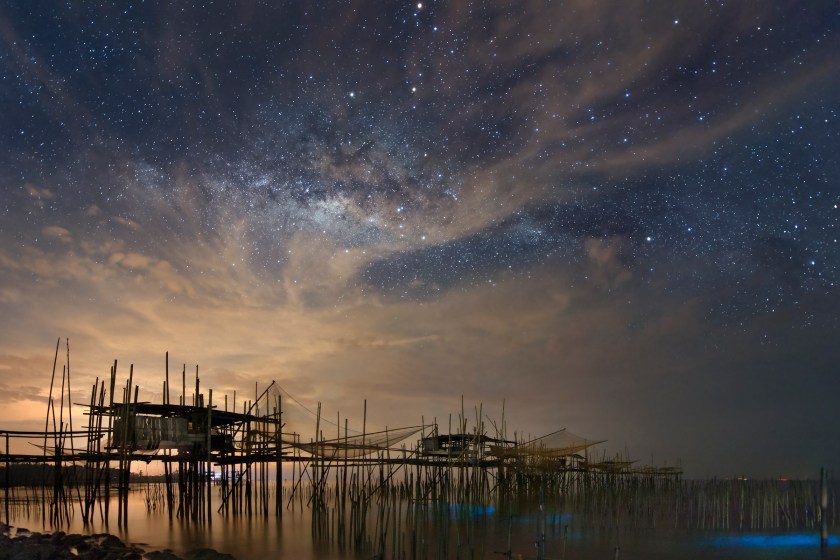
The natural light of the Milky Way battles with the light pollution over the fishing village, or kelong, in Batu Pahat, Malaysia. In the lower right hand corner, there is also bioluminescence in the waters at the bottom of the kelong. (Yuyu Wang)
Copyright of W.Yuyun

The rusty red swirls of the circular, iron sculpture Seven Magic Points in Brattebergan, Norway mirror the rippling aurora above. (Rune Engebo)
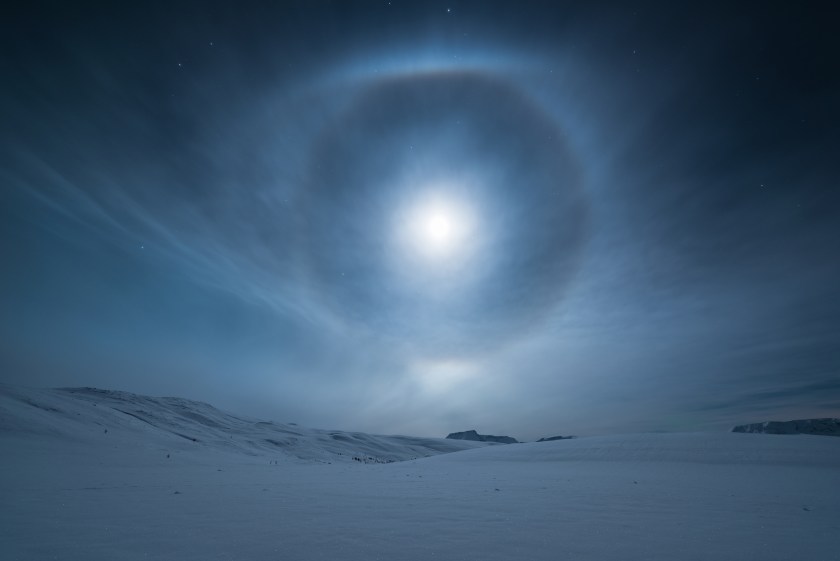
A mesmerizing lunar halo forms around our natural satellite, the Moon, in the night sky above Norway. The halo, also known as a moon ring or winter halo, is an optical phenomenon created when moonlight is refracted in numerous ice crystals suspended in the atmosphere. (Tommy Richardson)
Tommy Richardsen
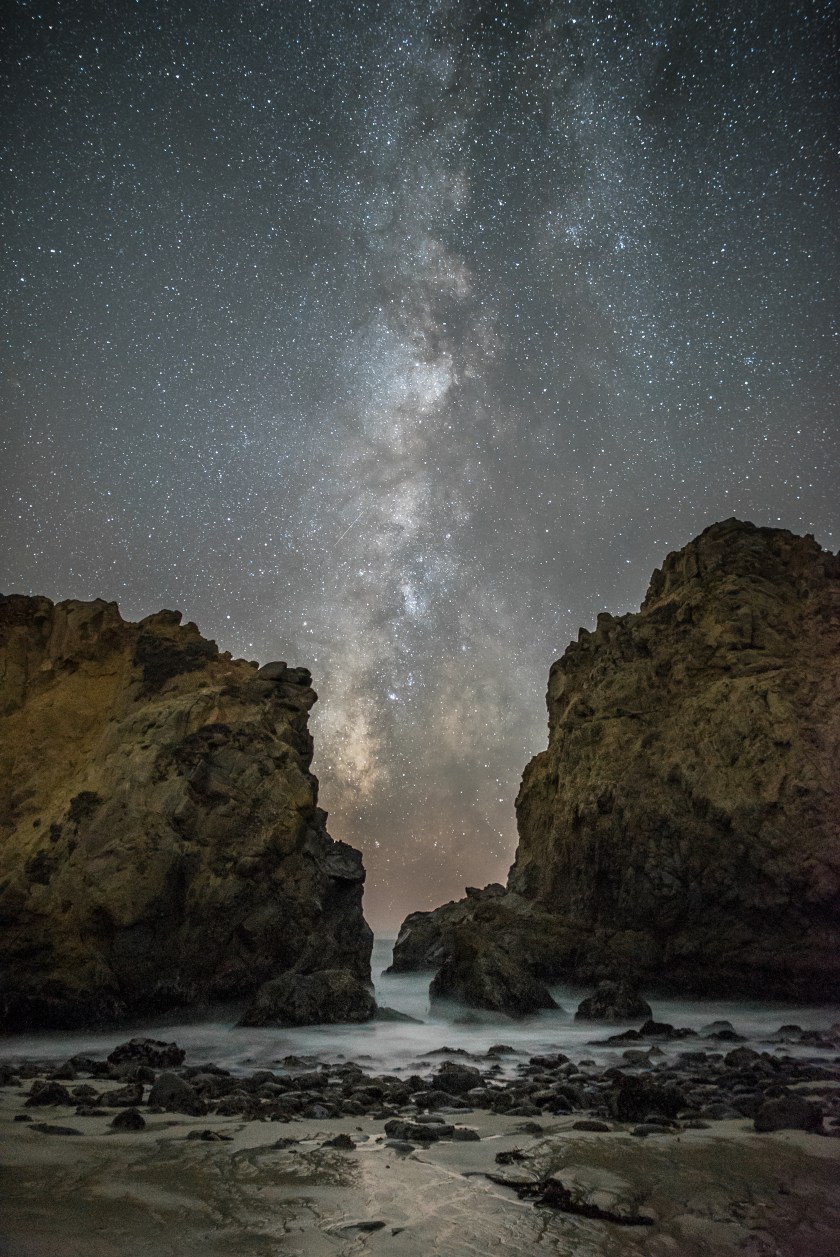
Our galaxy, the Milky Way, stretches across the night sky between two of the imposing rocks at Pfeiffer State Beach, near Big Sur, California. (Rick Whitacre)
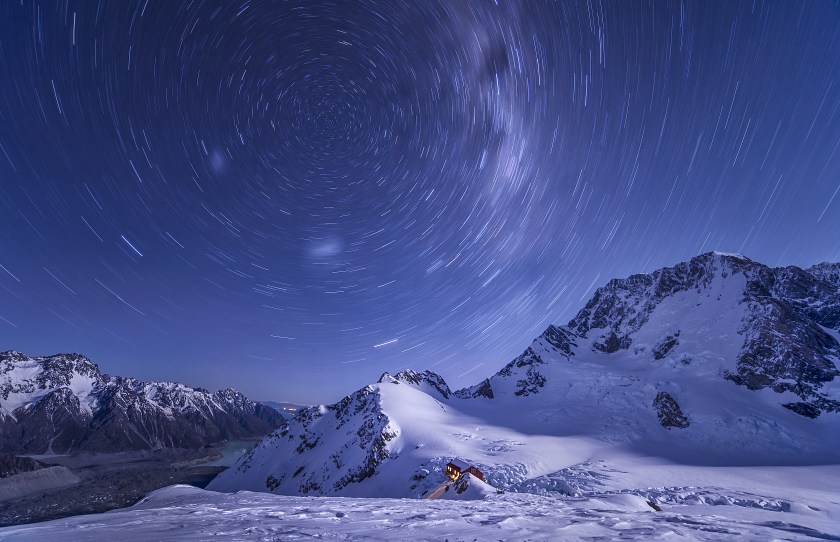
With temperatures close to -15 degrees, it’s not surprising that the photographer was the only soul in the vicinity of Plateau Hut in Mount Cook National Park, New Zealand. The lonely hut, dwarfed by the snowy mountains of the park, contrasts with the abundance of star trails seemingly encircling the peaks of the Anzac. (Lee Cook)

A tremendous filaprom extends from the surface of our star, the Sun. Filaproms are large, gaseous features that can be partially seem over the Sun’s disk as a filament, and they are known to reach lengths equal to 150 Earths aligned. (Gabriel Octavian Corban)
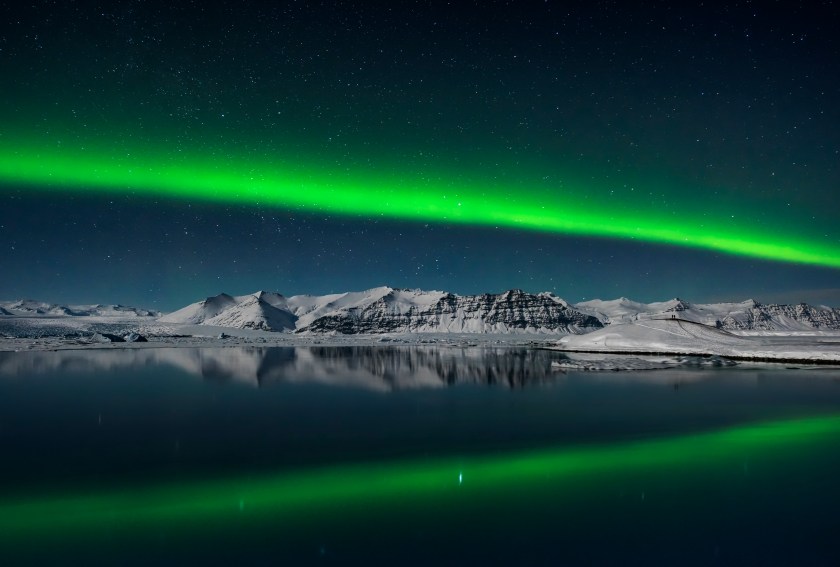
A couple takes in the awe-inspiring sight of the Northern Lights streaking across the night sky over the lagoon at Jokulsarlon, Iceland on Valentine’s night of 2016. (Giles Rocholl)
Giles Rocholl Photography Ltd
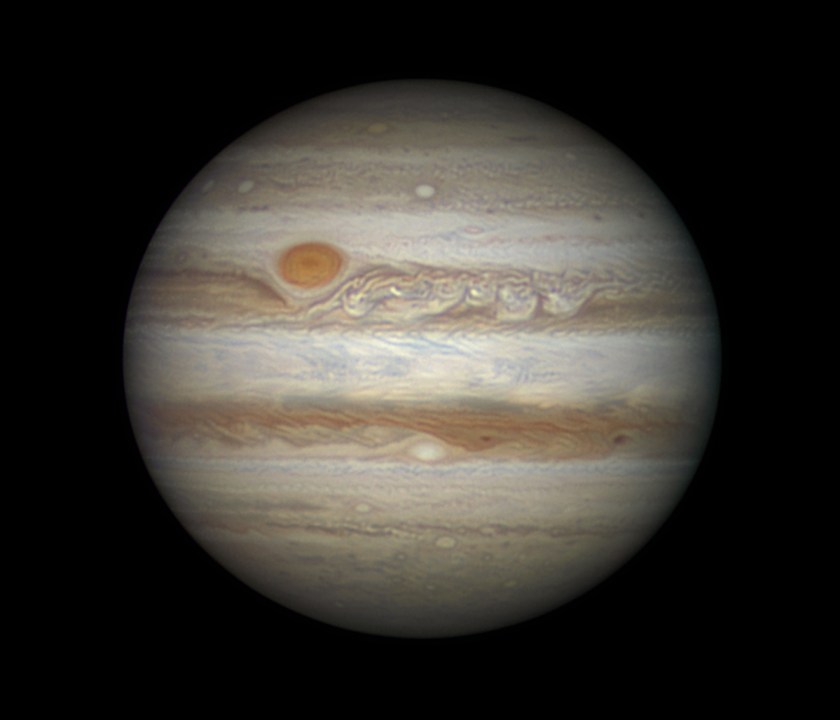
Looming in the night sky, tempestuous storms are visible across the face of the largest planet in our Solar System, Jupiter. The Great Red Spot – a raging storm akin to a hurricane on Earth – stands out in a deep orange from the hues of browns surrounding it. (Damian Peach)
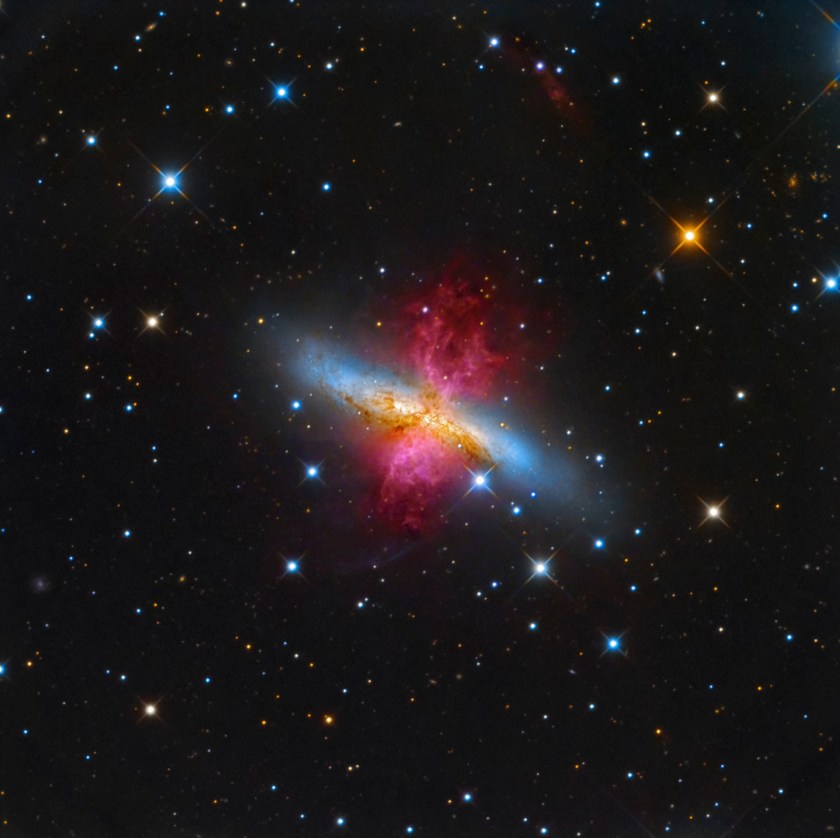
About 12 million light years away from our planet, lays the starburst galaxy M82, also known as the Cigar Galaxy. In a show of radiant red, the superwind bursts out from the galaxy, believed to be the closest place to our planet in which the conditions are similar to that of the early Universe, where a plethora of stars are forming. (Leonardo Orazi)
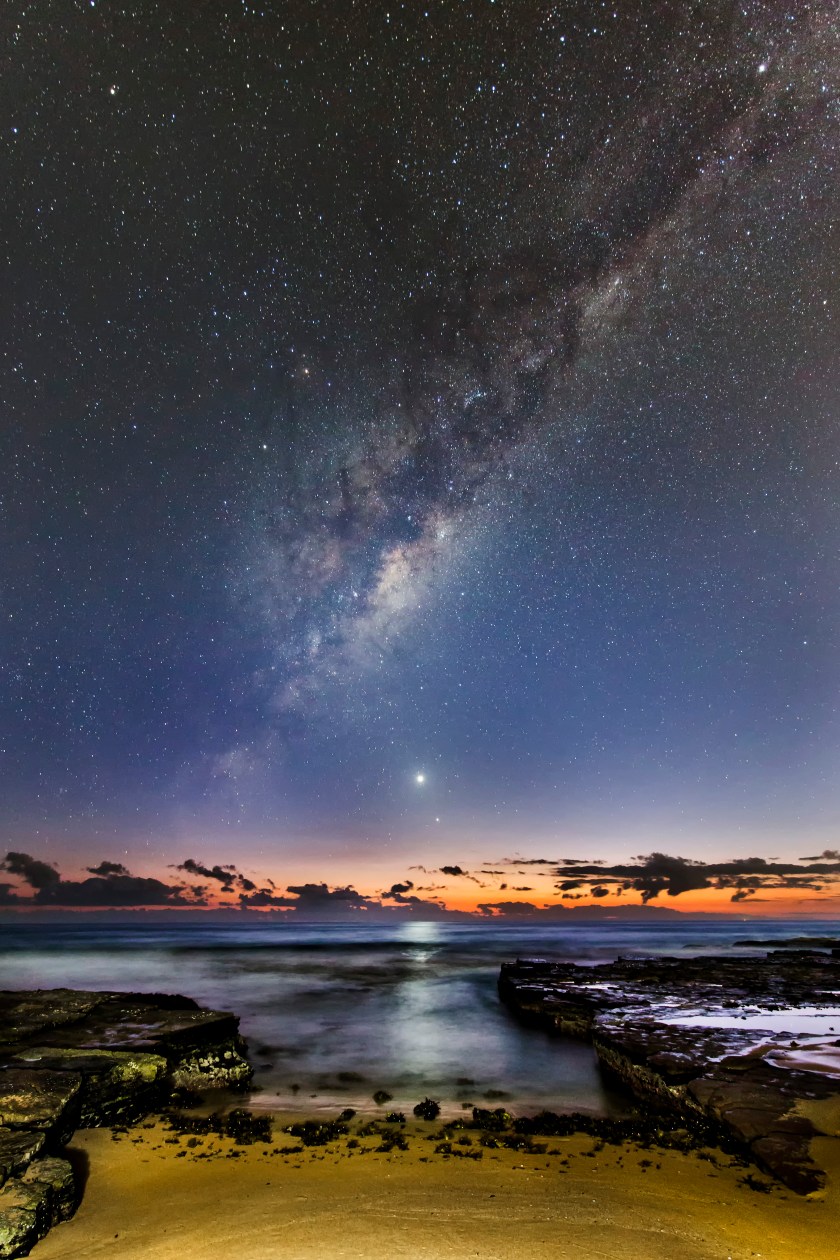
During the seldom-seen alignment of the five planets in February 2016, Venus, Mercury and the Milky Way rose an hour before sunrise, and appear to be fleeing its early glow, overlooking Turrimeta Beach, Australia. (Ivan Slade)
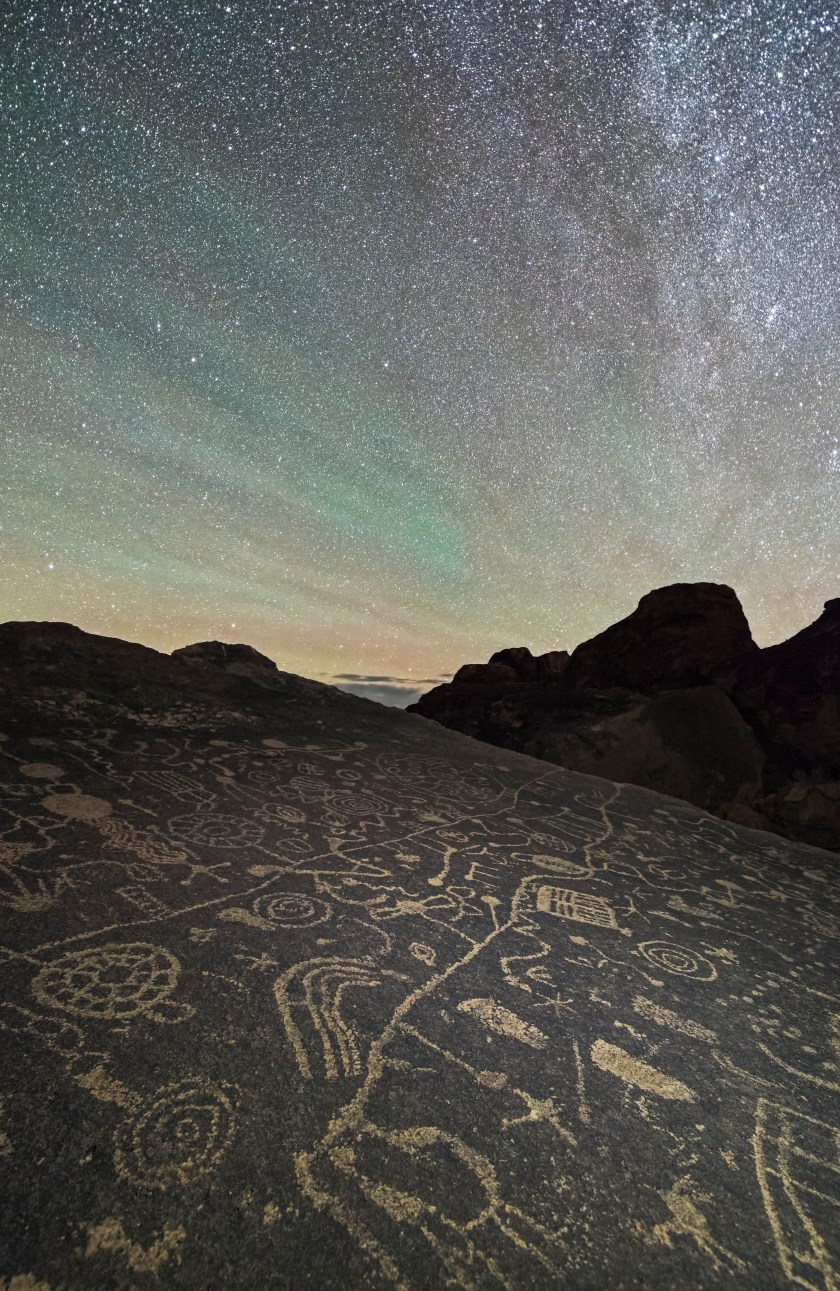
Ancient petroglyphs are lit up by the glittering stars of the night sky in the Eastern Sierras in California, USA. (Brandon Yoshizawa)
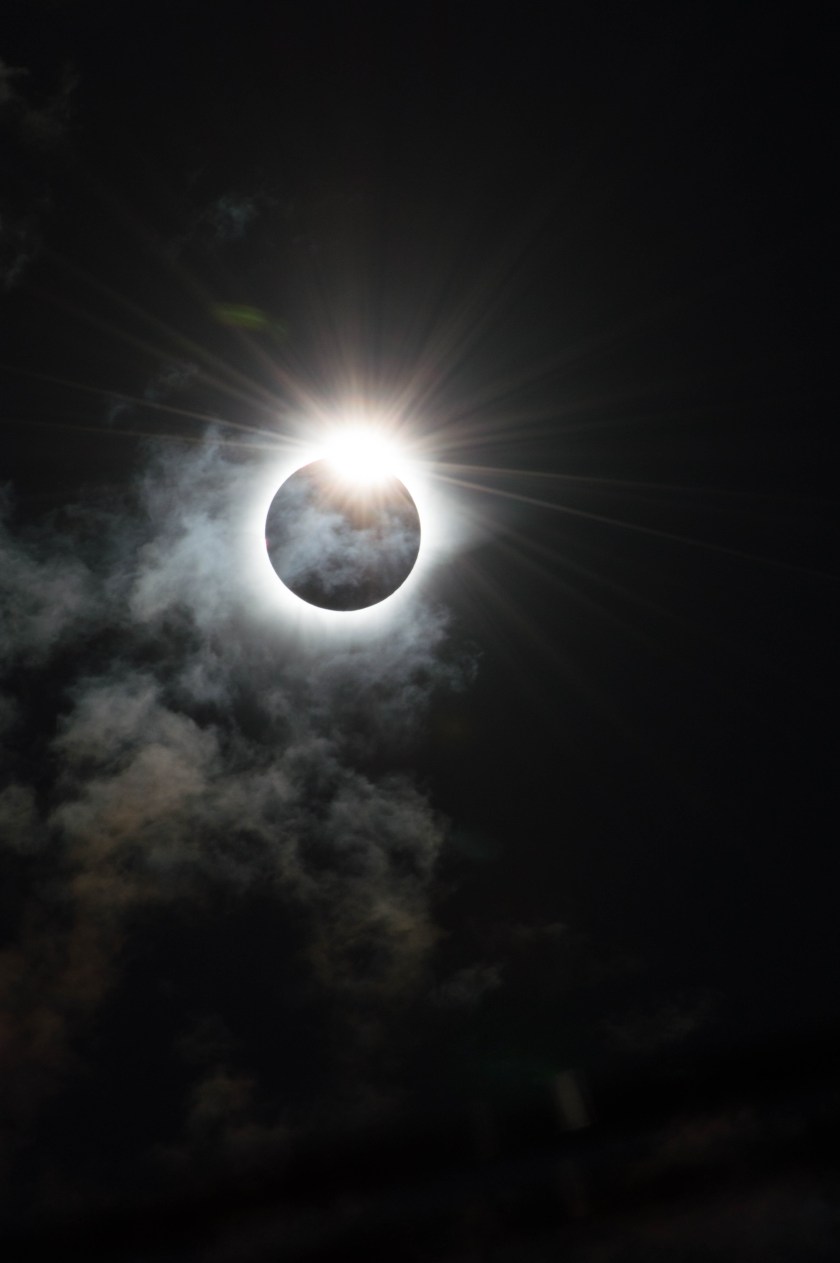
The dramatic moment that our star, the Sun, appears to be cloaked in darkness by the Moon during the Total Solar Eclipse of 9th March 2016 in Indonesia. The Sun peers out from behind the Moon and resembles the shape of a diamond ring, caused by the rugged edge of the Moon allowing some beads of sunlight to shine through in certain places.
(Melanie Thorne)
Melanie Thorne
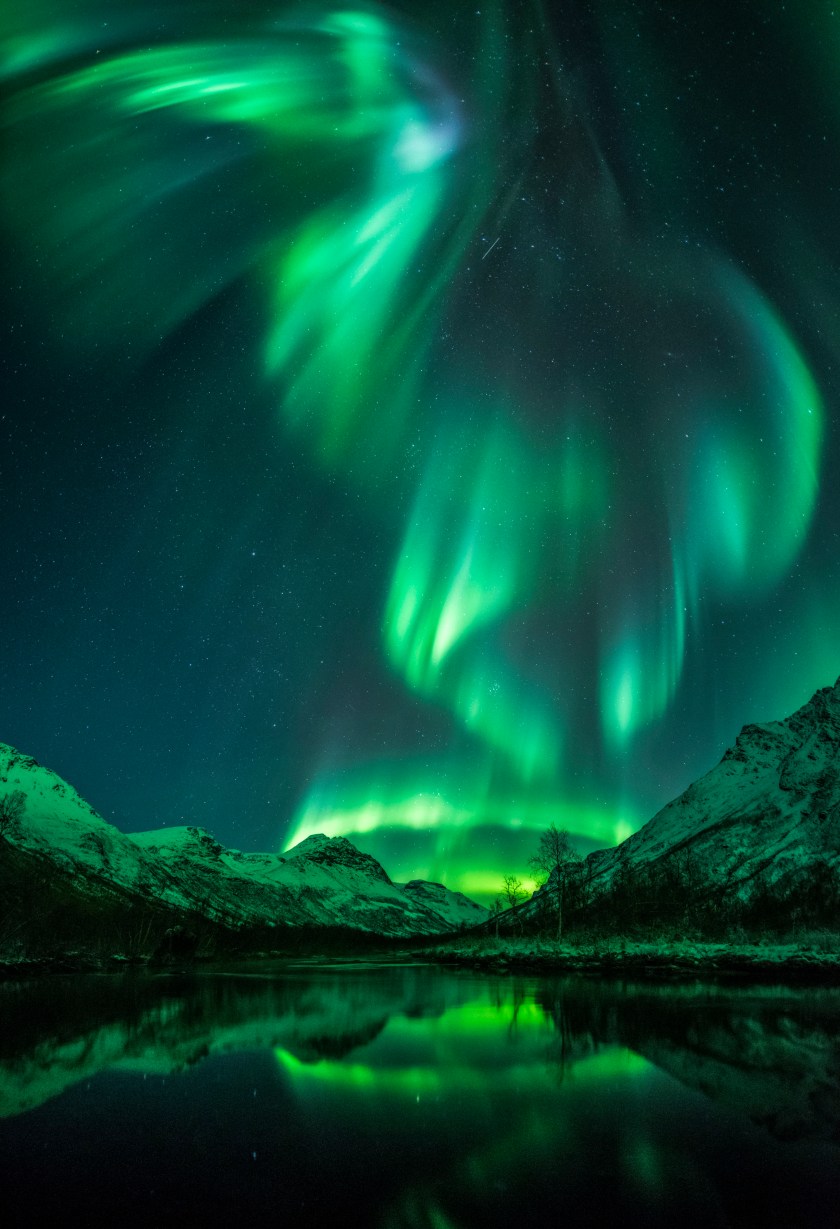
The vivid green Northern Lights resemble a bird soaring over open water in Olderdalen, Norway. (Jan Olsen)
Jan R Olsen
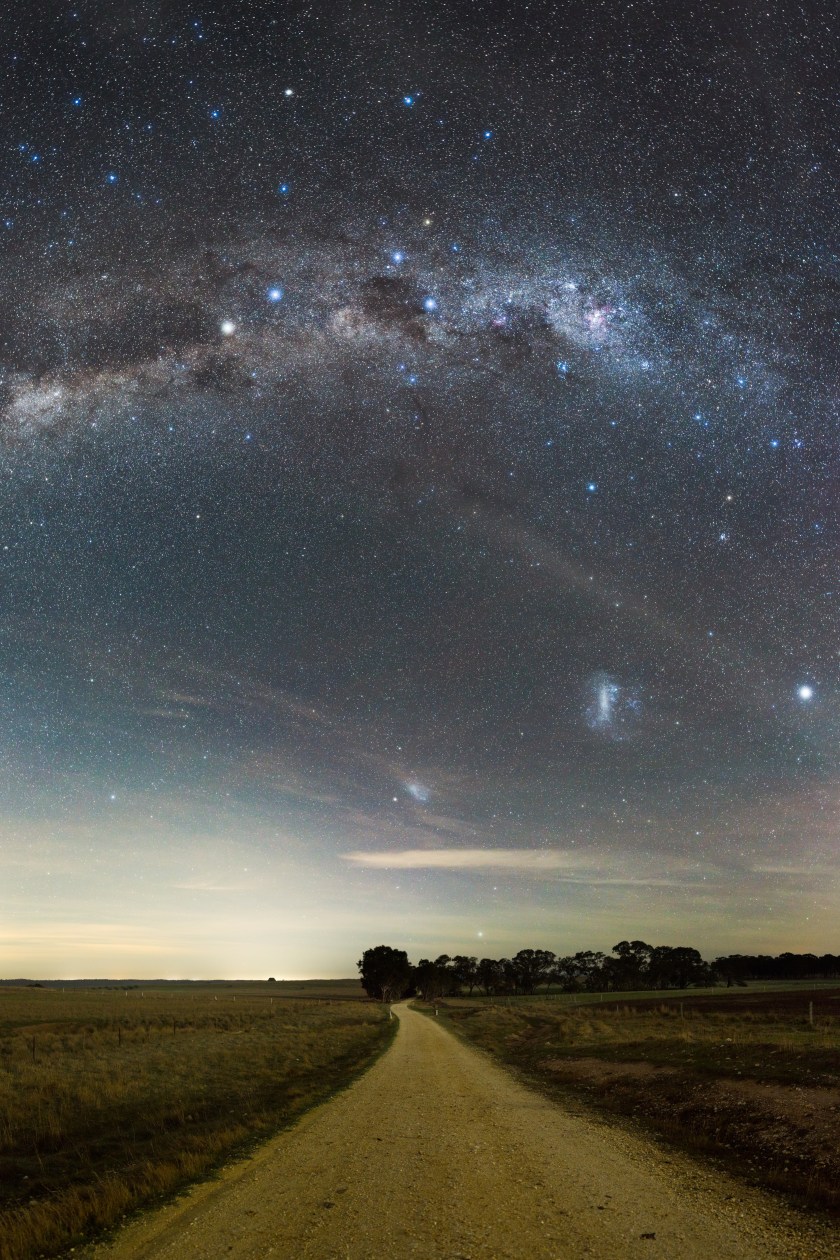
The Southern Cross constellation of the Milky Way, visible in the southern sky creates a guiding light along Bucklands Lane in Central Goldfields Shire, Victoria. (Phil Hart)
Phil Hart
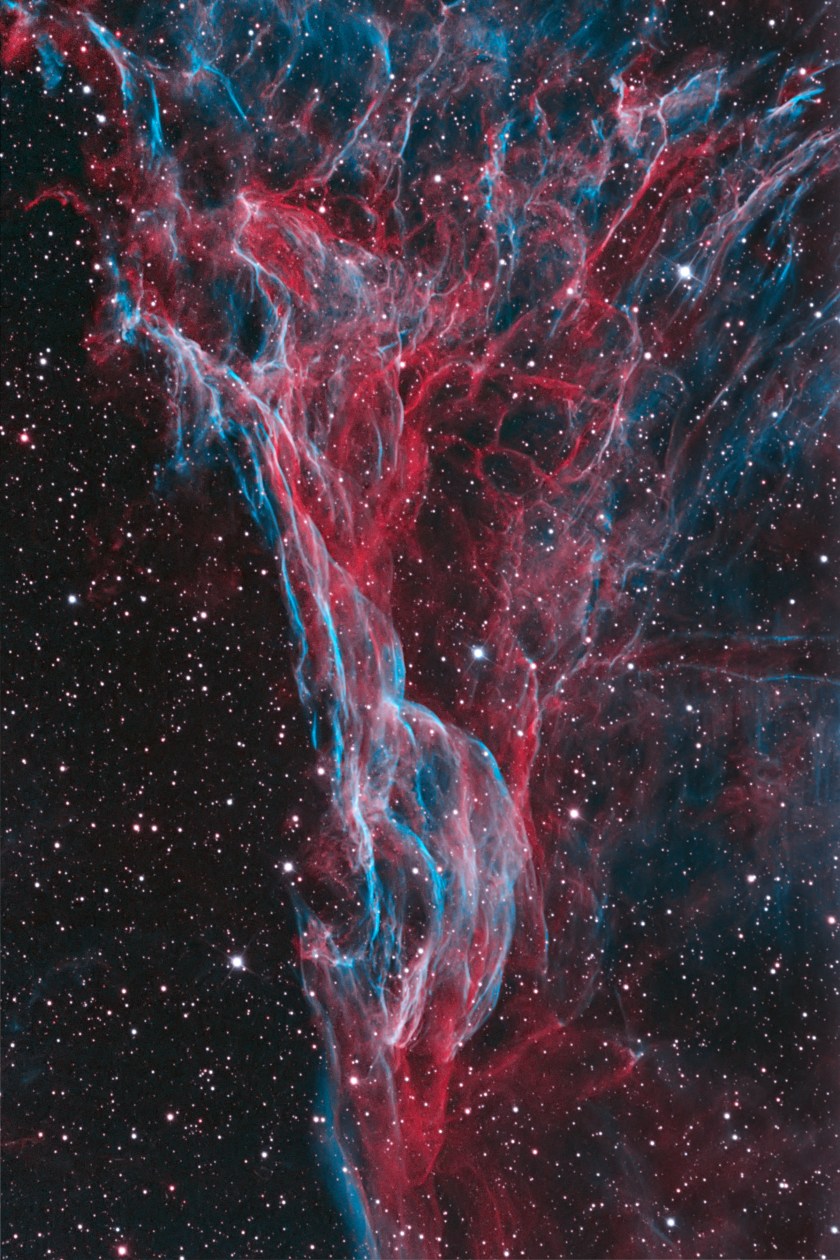
The luminous tangle of filaments of Pickering’s Triangle intertwines through the night sky. Located in the Veil Nebula, it is one of the main visual elements of a supernova remnant, whose source exploded around 8,000 years ago. (Bob Franke)
This article was featured in the InsideHook newsletter. Sign up now.











































